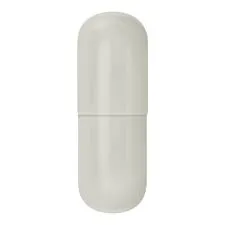
aug . 15, 2024 12:40 Back to list
Top Manufacturers of Hydroxypropyl Methyl Cellulose for Various Industrial Applications
The Role of HPMC Insights into Hydroxypropyl Methyl Cellulose Manufacturers
Hydroxypropyl methyl cellulose (HPMC) is a versatile cellulose derivative that has gained significant popularity across various industries, particularly in pharmaceuticals, food, construction, and cosmetics. HPMC is synthesized from natural cellulose through a series of chemical processes that introduce hydroxypropyl and methyl groups into the cellulose backbone. This modification enhances the solubility, viscosity, and gel-forming properties of cellulose, making HPMC a valuable ingredient in many applications.
Pharmaceutical Applications
In the pharmaceutical sector, HPMC is predominantly used as an excipient in drug formulations. Its ability to function as a thickening agent and stabilizer is invaluable for the manufacture of various dosage forms, including tablets, capsules, and suspensions. HPMC's unique properties allow for improved drug release profiles, making it easier to control the rate at which active ingredients are released into the body. Furthermore, HPMC is often used in the formulation of controlled-release drugs, as it can form gels that regulate the dissolution rate of the medication, thus prolonging its therapeutic effects.
Food Industry Utilization
The food industry has embraced HPMC for its functional benefits. As a food additive, it acts as a thickener, emulsifier, and stabilizer. HPMC's capacity to retain moisture makes it an ideal choice for improving the texture and shelf-life of various food products. In gluten-free baking, for instance, HPMC is used to enhance the elasticity and moisture retention of dough, significantly improving the quality of gluten-free bread and pastries. Additionally, HPMC's clean label status (as it is derived from natural cellulose) appeals to health-conscious consumers and manufacturers pursuing transparency in their ingredient declarations.
Construction and Building Materials
The construction industry utilizes HPMC for its water-retention and adhesive properties, particularly in dry-mix mortar products. When mixed with cement, HPMC helps to improve workability, increase adhesion, and reduce shrinkage. It is commonly used in tile adhesives, plaster mixes, and other cement-based materials. By enhancing the performance of these products, HPMC contributes to the durability and longevity of construction structures, demonstrating its crucial role in modern building practices.
hpmc-hydroxypropyl methyl cellulose manufacturer

Cosmetic and Personal Care Products
In the cosmetics and personal care sector, HPMC is valued for its emulsifying and thickening capabilities. It is commonly found in products such as lotions, creams, and gels, where it improves texture and provides stability to emulsions. Additionally, HPMC's non-toxic and biocompatible nature makes it an appealing ingredient for formulations aiming to minimize skin irritation and enhance user experience.
The Future of HPMC Manufacturing
As demand for HPMC continues to grow, the role of manufacturers becomes increasingly important. Companies specializing in HPMC production are continually investing in research and development to improve the quality, functionality, and sustainability of their products. Striking a balance between performance and environmental responsibility is a significant focus, with many manufacturers exploring green chemistry techniques and sustainable sourcing of raw materials.
The evolution of HPMC manufacturing is also closely tied to advancements in technology. The advent of more sophisticated synthesis processes allows manufacturers to create specialized grades of HPMC tailored to specific applications. This level of customization enables industries to meet diverse consumer needs while maintaining high standards of quality.
Conclusion
Hydroxypropyl methyl cellulose is a remarkable substance with a vast range of applications across multiple industries. From pharmaceuticals to food, construction, and cosmetics, the versatility of HPMC underscores its fundamental role in enhancing product performance and consumer satisfaction. As manufacturers continue to innovate and adapt to market demands, HPMC is poised to remain a crucial component in the formulation of high-quality products for years to come.
-
Unlocking the Benefits of HPMC Products: A Gateway to Versatile Applications
NewsAug.07,2025
-
Unleashing the Potential of HPMC Ashland: A Comprehensive Look
NewsAug.07,2025
-
Tile Bonding Cellulose: The Key to Superior Adhesion and Durability
NewsAug.07,2025
-
Hydroxypropyl Methylcellulose Powder: The Versatile Component in Modern Pharmaceuticals
NewsAug.07,2025
-
Hydroxyethyl Cellulose: The Versatile Solution for Various Industries
NewsAug.07,2025
-
Hydroxyethyl Cellulose (HEC): The Versatile Polymer for Various Applications
NewsAug.07,2025







